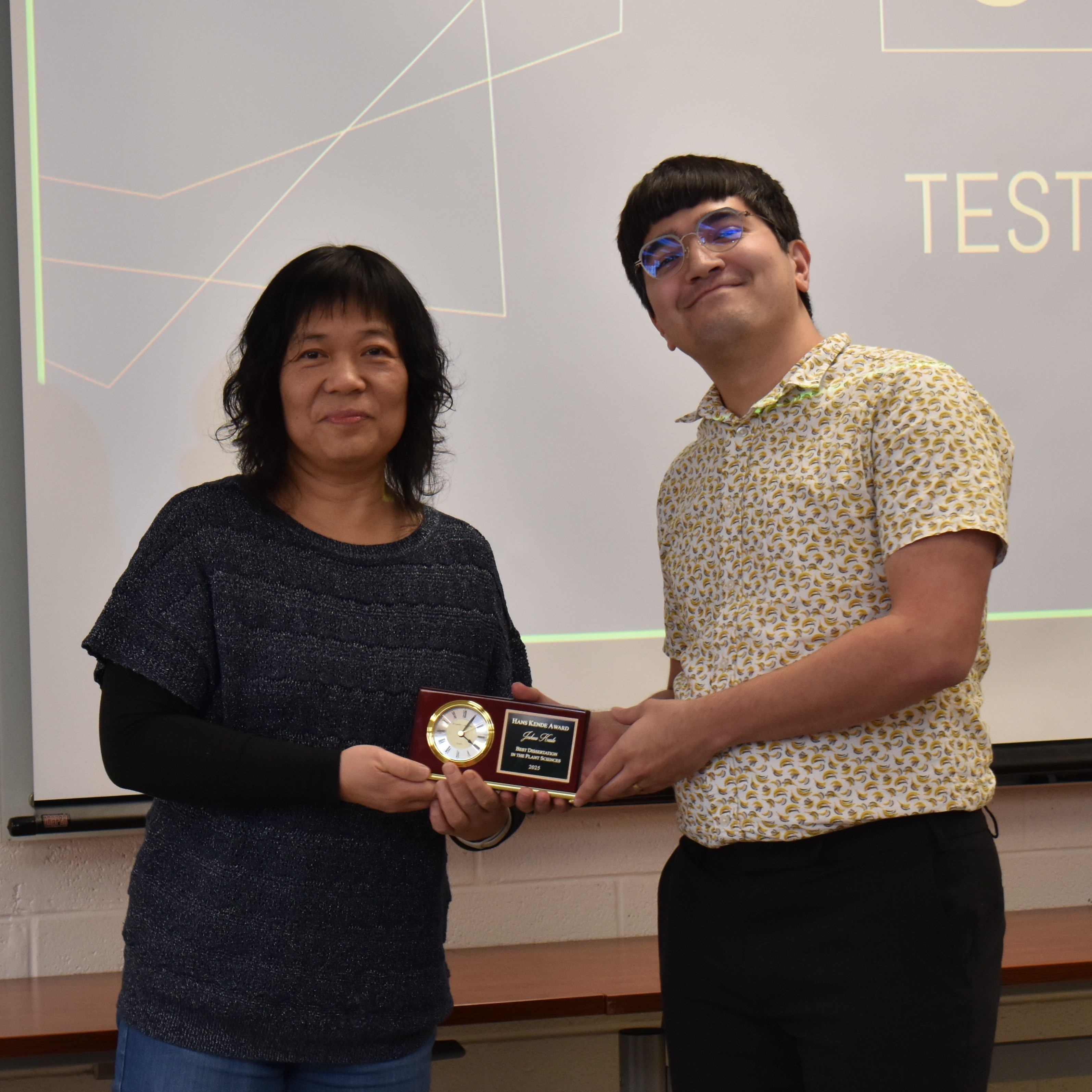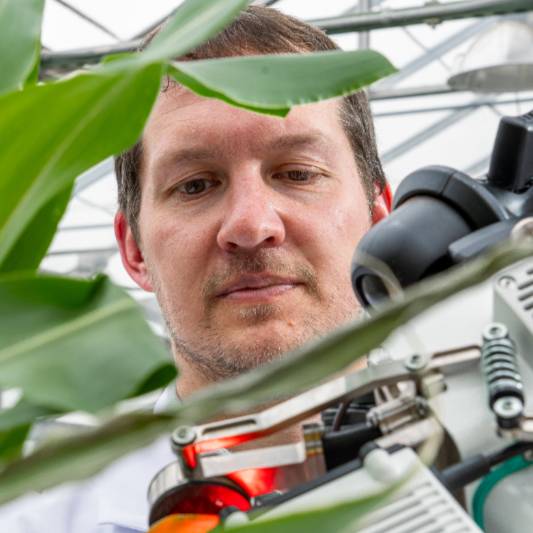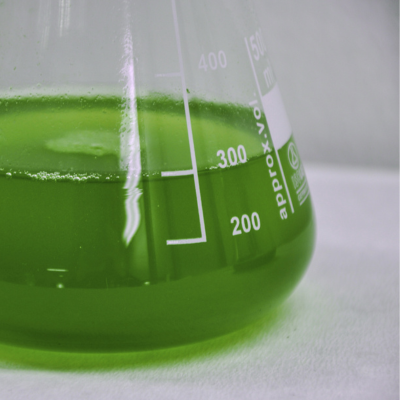Beating the heat: Exploring algae's ability to thrive in extreme environments
Found in acidic volcanic hot springs, the extremophilic alga Cyanidioschyzon merolae contains a unique process that allows them to survive in extreme environments. Researchers, led by graduate student Anne Steensma from the MSU-DOE Plant Research Laboratory (PRL), are looking at this process and its potential to change how we understand the ways photosynthetic organisms adapt to environmental challenges like high temperatures.
This study was published in Photosynthesis Research.
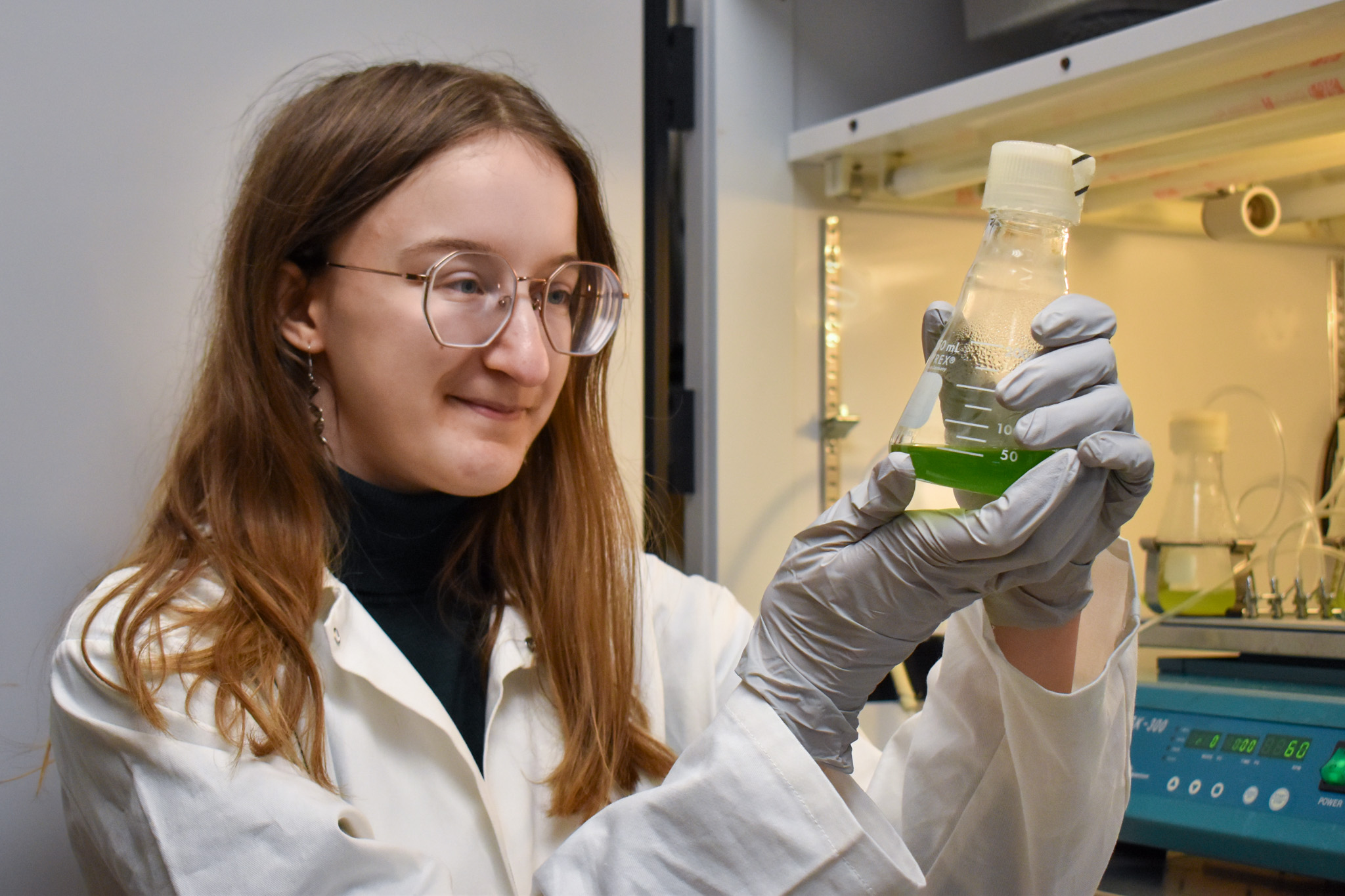
By Kara Headley, MSU-DOE Plant Research Laboratory 2023
Harsh environments such as hot springs make photosynthesis a challenge. In hot water, carbon dioxide (CO2) – a vital ingredient of photosynthesis – tends to be relatively scarce and slowly moving. However, Cyanidioschyzon merolae thrives in this challenging environment.
“We were interested in looking at how this species might achieve the environmental resilience that they have,” said Steensma, first author on the study and graduate student in both the Walker and Shachar-Hill labs. She is also in the Department of Plant Biology and the Molecular Plant Sciences graduate program. “What we show is one of the ways they achieve this environmental resilience is they have a mechanism to boost their photosynthetic efficiency.”
Steensma has discovered traits of this alga that suggest it has a carbon-concentrating mechanism (CCM), a process that gathers CO2 around the photosynthetic enzyme that uses it. CCMs make it easier for algae to photosynthesize, even in low-CO2 environments. However, Cyanidioschyzon merolae appears to be missing some of the key characteristics of a typical organism with a CCM, including a chloroplast structure called a pyrenoid and the ability to take up carbon in the form of bicarbonate.
“There are only a few ways, that we know of, about how nature has ‘turbo-charged’ photosynthesis using a carbon-concentrating mechanism,” said Berkley Walker, assistant professor in the PRL and the Department of Plant Biology. “Here we have a system where this appears to be happening, but we don't see any of the parts that are usually required to make this work.”
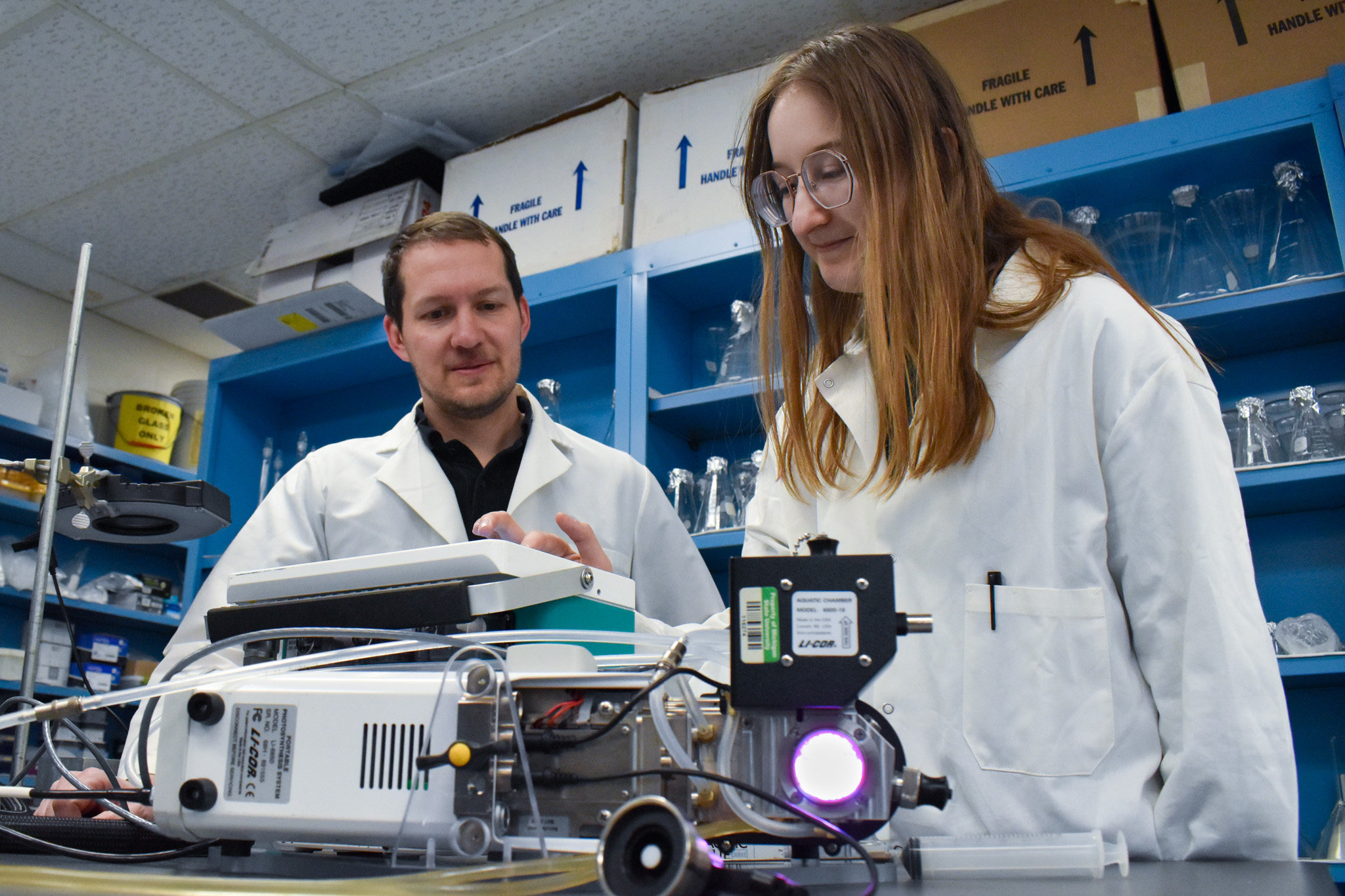
By Kara Headley, MSU-DOE Plant Research Laboratory 2023
Despite missing some of the usual characteristics, Cyanidioschyzon merolae does seem to operate a CCM. Steensma measured how fast this alga took up CO2 under different conditions and concentrations of it. By looking at the response of the alga, she was able to determine that they must have some mechanism to help them efficiently use CO2, even if it is not a traditional CCM.
Understanding carbon-concentrating mechanisms and the ways they function in different photosynthetic organisms has potential uses in biotechnology.
“There are ideas of engineering components of carbon-concentrating mechanisms into crop plants that don’t have them and boosting the photosynthetic efficiency of those crop plants,” Steensma said.
Going forward, Steensma will continue exploring how the CCM works in this species and what proteins and cellular structures are involved.
This work was supported by a predoctoral training award from the National Institute of General Medical Sciences of the National Institutes of Health, and two grants from the United States Department of Energy, the Division of Chemical Sciences, Geosciences and Biosciences, Office of Basic Energy Sciences and Office of Biological and Environmental Research.
By Kara Headley; Banner image by Kara Headley
